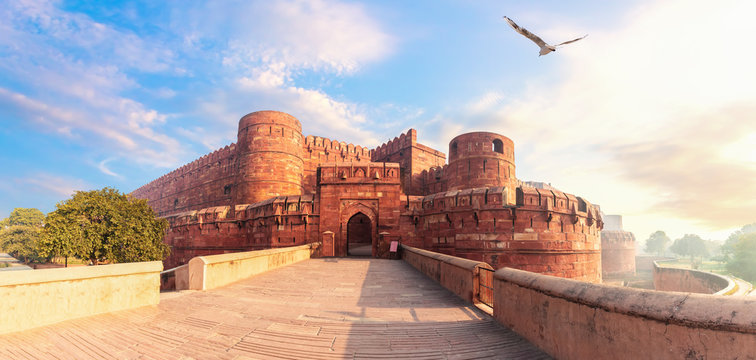


Overview
The magnificent Agra Fort is a UNESCO World Heritage Site and one of India’s most iconic historical landmarks. Located in the city of Agra, this grand red sandstone fortress was commissioned by Akbar in 1565 and later enhanced by his successors, including Shah Jahan. Sprawling over 94 acres, Agra Fort served as the main residence of the Mughal Empire emperors until the capital shifted to Delhi.
Visitors can explore its exquisite palaces, such as the Jahangir Mahal, Khas Mahal, and Sheesh Mahal, along with audience halls like the Diwan-i-Aam and Diwan-i-Khas. The fort’s high ramparts, massive gates, intricate marble inlays, and Mughal architectural brilliance narrate the grandeur of India’s medieval history.
A visit to Agra Fort offers a deep dive into India’s rich cultural heritage and provides breathtaking views of the nearby Taj Mahal from its ramparts. Whether you are a history lover, architecture enthusiast, or a cultural explorer, Agra Fort promises an unforgettable journey through time.
Top Destinations
Discover the majestic Agra Fort in Agra — a UNESCO heritage site showcasing Mughal grandeur, royal palaces, and rich cultural history.
Free Ask Question?
Q1: What is the historical significance of Agra Fort?
A: Agra Fort was the main residence of Mughal emperors and a strategic military base, symbolizing the power and grandeur of the Mughal dynasty.
Q2: What are the must-see attractions inside Agra Fort?
A: Key highlights include Jahangir Mahal, Khas Mahal, Sheesh Mahal, Diwan-i-Aam, Diwan-i-Khas, and the Musamman Burj offering Taj Mahal views.
Q3: What is the best time to visit Agra Fort?
A: The ideal time is from October to March when the weather is pleasant for exploring the fort.
Q4: How much time is needed to explore Agra Fort?
A: Typically, 2–3 hours are sufficient to explore the main palaces, courtyards, and halls at a relaxed pace.
Q5: Is there an entry fee for visiting Agra Fort?
A: Yes, there is an entry fee. Indian nationals pay a nominal fee, while foreign visitors have a slightly higher ticket price. Children below 15 years are free.
